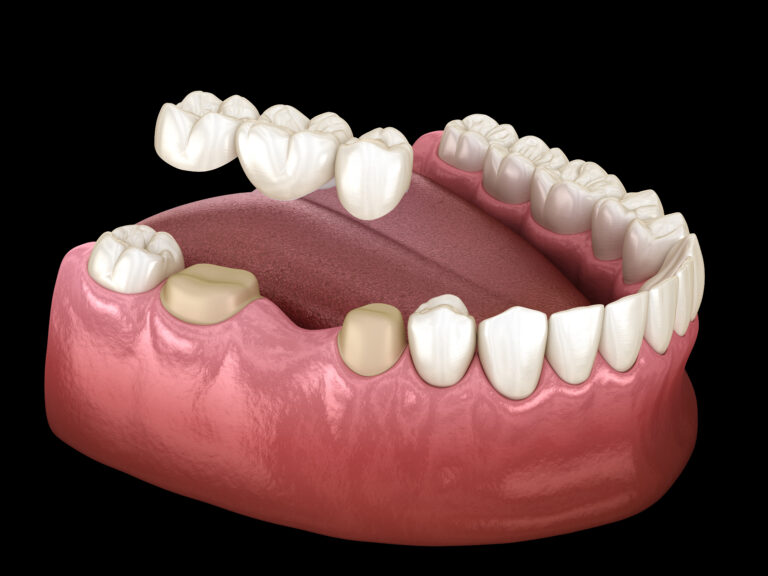Dental bridges are natural-looking dental appliances that replace a single missing tooth or a section of missing teeth allowing a person to restore his or her ability to chew and speak properly, smile confidently, improve bite, and maintain facial structure, gum health and bone density in the jaw. Because they are custom-made, bridges are barely noticeable and can restore the natural contour of teeth as well as the proper bite relationship between upper and lower teeth.

